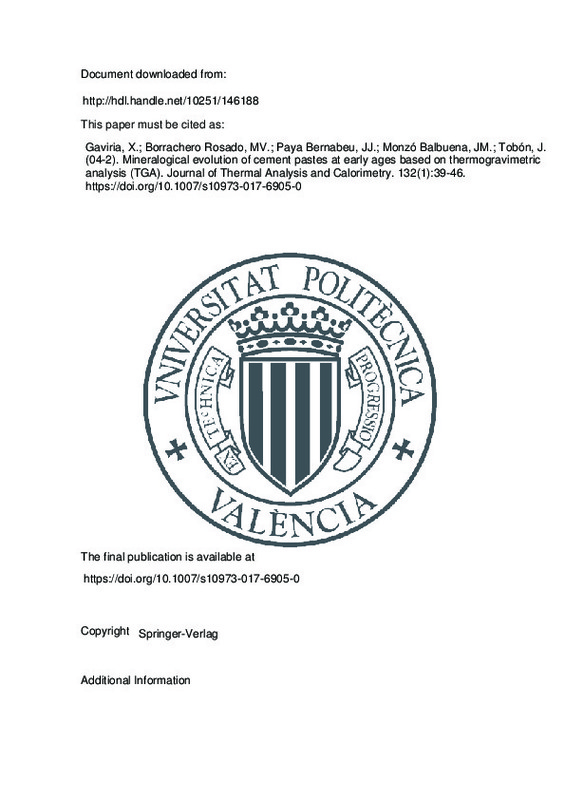Benboudjema F, Meftah JM, Torernti F. Interaction between drying, shrinkage, creep and cracking phenomena in concrete. Eng Struct. 2005;27:239–50.
Holt E. Contribution of mixture design to chemical and autogenous shrinkage of concrete at early ages. Cem Concr Res. 2005;35:464–72.
Darquennes A, Staquet S, Delplancke-Ogletree MP, Espion B. Effect of autogenous deformation on the cracking risk of slag cement concretes. Cem Concr Compos. 2011;33:368–79.
[+]
Benboudjema F, Meftah JM, Torernti F. Interaction between drying, shrinkage, creep and cracking phenomena in concrete. Eng Struct. 2005;27:239–50.
Holt E. Contribution of mixture design to chemical and autogenous shrinkage of concrete at early ages. Cem Concr Res. 2005;35:464–72.
Darquennes A, Staquet S, Delplancke-Ogletree MP, Espion B. Effect of autogenous deformation on the cracking risk of slag cement concretes. Cem Concr Compos. 2011;33:368–79.
Slowik V, Schmidt M, Fritzsch R. Capillary pressure in fresh cement-based materials and identification of the air entry value. Cem Concr Compos. 2008;30(7):557–65.
Evju C, Hansen S. Expansive properties of ettringite in a mixture of calcium aluminate cement, Portland cement and ß-calcium sulfate hemihydrates. Cem Concr Res. 2001;31:257–61.
Bentz DP, Jensen OM, Hansen KK. Olesen, Stang, H. Haecker, C.J. Influence of cement particle-size distribution on early age autogenous strain and stresses in cement-based materials. J Am Ceram Soc. 2001;84(1):129–35.
Barcelo L, Moranville M, Clavaud B. Autogenous shrinkage of concrete: a balance between autogenous swelling and self-desiccation. Cem Concr Res. 2005;35(1):177–83.
Bouasker M, Mounanga P, Turcry P, Loukili A, Khelidj A. Chemical shrinkage of cement pastes and mortars at very early age: effect of limestone filler and granular inclusions. Cem Concr Compos. 2008;30(1):13–22.
Bentz DP. A review of early-age properties of cement-based materials. Cem Concr Res. 2008;38(2):196–204.
Ozawa T. Controlled rate thermogravimetry. New usefulness of controlled rate thermogravimetry revealed by decomposition of polyimide. J Therm Anal Calorim. 2000;59:375–84.
Ramachandran VS, Paroli RM, Beaudoin JJ, Delgado AH. Thermal analysis of construction materials. Building materials series. New York: Noyes Publications; 2003.
Zanier A. High-resolution TG for the characterization of diesel fuel additives. J Therm Anal Calorim. 2001;64:377–84.
Tobón JI, Payá J, Borrachero MV, Restrepo OJ. Mineralogical evolution of Portland cement blended with silica nanoparticles and its effect on mechanical strength. Constr Build Mater. 2012;36:736–42.
Singh M, Waghmare S, Kumar V. Characterization of lime plasters used in 16th century Mughal Monument. J Archeol Sci. 2014;42:430–4.
Majchrzak-Kuçeba I. Thermogravimetry applied to characterization of fly ash-based MCM-41 mesoporous materials. J Therm Anal Calorim. 2012;107:911–21.
Silva ACM, Gálico DA, Guerra RB, Legendre AO, Rinaldo D, Galhiane MS, Bannach G. Study of some volatile compounds evolved from the thermal decomposition of atenolol. J Therm Anal Calorim. 2014;115:2517–20.
Rios-Fachal M, Gracia-Fernández C, López-Beceiro J, Gómez-Barreiro S, Tarrío-Saavedra J, Ponton A, Artiaga R. Effect of nanotubes on the thermal stability of polystyrene. J Therm Anal Calorim. 2013;113:481–7.
Yamarte L, Paxman D, Begum S, Sarkar P, Chambers A. TG measurement of reactivity of candidate oxygen carrier materials. J Therm Anal Calorim. 2014;116:1301–7.
Borrachero MV, Payá J, Bonilla M, Monzó J. The use of thermogravimetric analysis technique for the characterization of construction materials. The gypsum case. J Therm Anal Calorim. 2008;91(2):503–9.
Tobón JI, Payá J, Borrachero MV, Soriano L, Restrepo OJ. Determination of the optimum parameters in the high resolution thermogravimetric analysis (HRTG) for cementitious materials. J Therm Anal Calorim. 2012;107:233–9.
Kuzielova E, Žemlička M, Másilko, J, Palou, M.T. Effect of additives on the performance of Dyckerhoff cement, Class G, submitted to simulated hydrothermal curing. J Therm Anal Calorim. Accepted 29 Oct 2017
Genc M, Genc ZK. Microencapsulated myristic acid–fly ash with TiO2 shell as a novel phase change material for building application. J Therm Anal Calorim. Accepted 24 Oct 2017.
Singh M, Kumar SV, Waghmare SA. The composition and technology of the 3–4th century CE decorative earthen plaster of Pithalkhora caves, India. J Archeol Sci. 2016;7:224–37.
Liu L, Liu Q, Cao Y, Pan WP. The isothermal studies of char-CO2 gasification using the high-pressure thermo-gravimetric method. J Therm Anal Calorim. 2015;120:1877–82.
Majchrzak-Kuce I, Bukalak-Gaik D. Regeneration performance of metal–organic frameworks TG-vacuum tests. J Therm Anal Calorim. 2016;125:1461–6.
Ion RM, Radovici C, Fierascu RC, Fierascu I. Thermal and mineralogical investigations of iron archaeological Materials. J Therm Anal Calorim. 2015;121:1247–53.
Rupasinghe M, San Nicolas R, Mendis P, Sofi M, Ngo T. Investigation of strength and hydration characteristics in nano-silica incorporated cement paste. Cem Concr Compos. 2017;80:17–30.
Esteves PL. On the hydration of water-entrained cement–silica systems: combined SEM, XRD and thermal analysis in cement pastes. Thermochim Acta. 2011;518:27–35.
Riesen R. Adjustment of heating rate for maximum resolution in TG and TMA (MaxRes). J Therm Anal. 1998;53:365–74.
Lim S, Mondal P. Micro- and nano-scale characterization to study the thermal degradation of cement-based materials. Mater Charact. 2014;92:15–25.
Gill PS, Sauerbrunn SR, Crowe BS. High resolution thermogravimetry. J Therm Anal. 1992;38:255–66.
Mounanga P, Khelidj A, Loukili A, Baroghel-Bouny V. Predicting Ca(OH)2 content and chemical shrinkage of hydrating cement pastes using analytical approach. Cem Concr Res. 2004;34:255–65.
Zeng Q, Li K, Fen-chong T, Dangla P. Determination of cement hydration and pozzolanic reaction extents for fly-ash cement pastes. Constr Build Mater. 2012;27:560–9.
Parrott LP, Geiker M, Gutteridge WA, Killoh D. Monitoring Portland cement hydration: Comparison of methods. Cem Concr Res. 1990;20:919–26.
Hewlett PC. Lea’s chemistry of cement and concrete. 4th ed. Oxford: Elsevier Science & Technology Books; 2004.
ASTM C305 Standard practice for mechanical mixing of hydraulic cement pastes and mortars of plastic consistency. ASTM International, West Conshohocken, PA; 2012.
Taylor HF. Cement chemistry. 2nd ed. Westminster: Thomas Telford; 1997.
Nadelman EI, Freas DJ, Kurtis KE. Nano- and microstructural characterization of Portland limestone cement paste. In: Nanotechnology in construction. Proceedings of NICOM 5. 2015. p. 87–92.
[-]







![[Cerrado]](/themes/UPV/images/candado.png)


